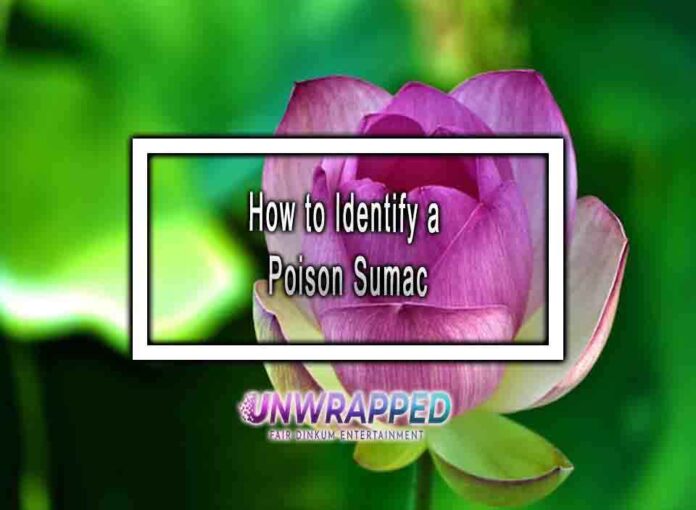Identifying poison sumac (Toxicodendron vernix) is crucial for avoiding contact, as this plant contains urushiol, an oil that can cause an allergic reaction in many people. Here are some key characteristics to help you identify poison sumac:
Leaf Arrangement:
- Poison sumac typically has pinnately compound leaves, meaning multiple leaflets are arranged along a central stem.

- Poison sumac typically has pinnately compound leaves, meaning multiple leaflets are arranged along a central stem.
Leaf Structure:
- Each leaf typically consists of 7 to 13 leaflets arranged in pairs, with a single leaflet at the end.
Leaf Color:
- The color of the leaves can vary but is often a glossy green. In the fall, the leaves may turn shades of red or orange.
Leaf Margin:
- The leaf margins can be smooth or have small teeth.
Leaf Veins:
- The veins of the leaflets are usually parallel, not net-like.
Stem Color:
- The stems of poison sumac are often red and can have a smooth or slightly hairy appearance.
Habitat:
- Poison sumac is commonly found in wet or swampy areas. Unlike its relatives, poison ivy and poison oak, it prefers a more aquatic environment.
Fruit:
- Poison sumac produces clusters of white berries. However, the presence of berries may not always be apparent, especially during certain times of the year.
Growth Form:
- Poison sumac can grow as a shrub or small tree, reaching heights of up to 20 feet.
Location:
- Poison sumac is more commonly found in the eastern and southeastern United States. It may not be as prevalent or may be absent in other regions.
It’s important to note that identifying poison sumac may be challenging for individuals who are not experienced botanists. If you are uncertain about a plant’s identity and suspect it may be poison sumac, it’s best to err on the side of caution and avoid contact. If you believe you’ve come into contact with poison sumac, wash the affected area thoroughly with soap and water, and seek medical attention if a rash develops. If you need to remove poison sumac from your property, it’s advisable to wear protective clothing, including gloves and long sleeves, and consider seeking professional help to avoid exposure.











